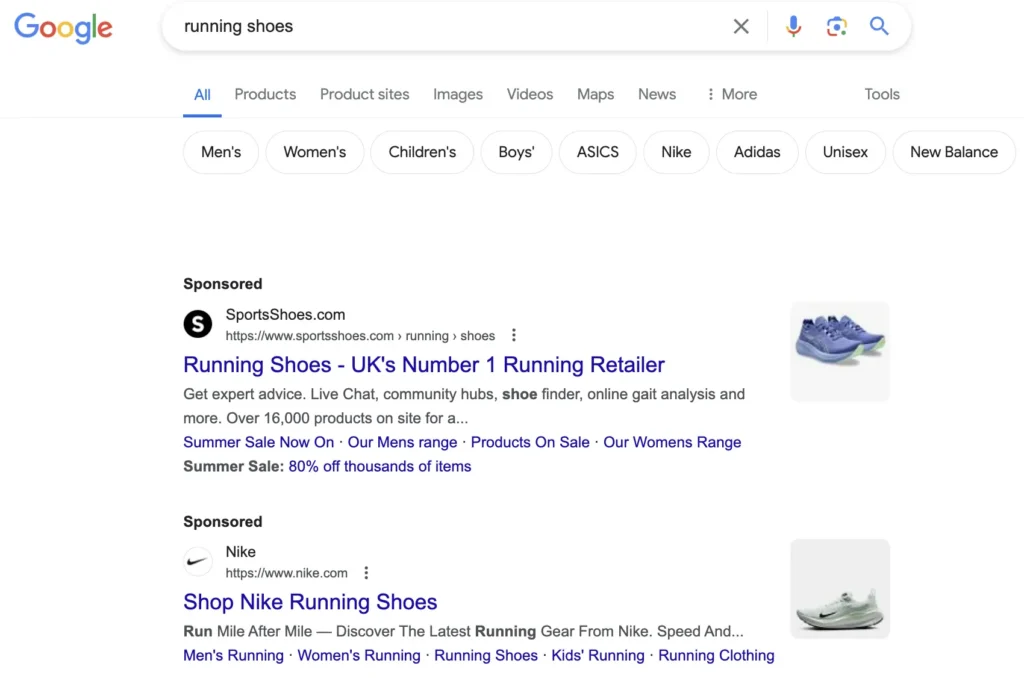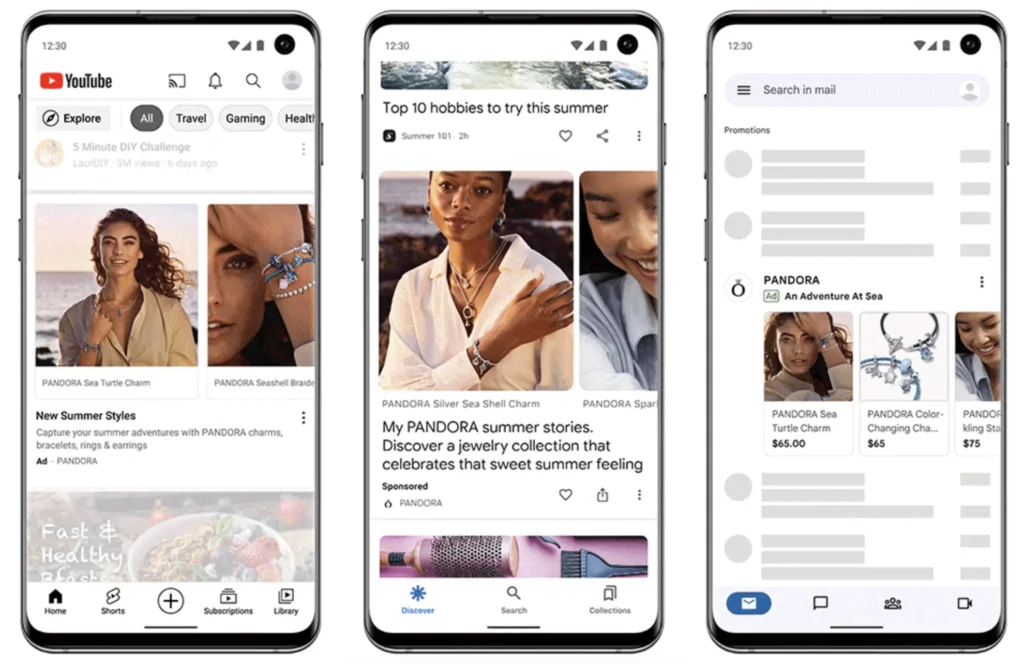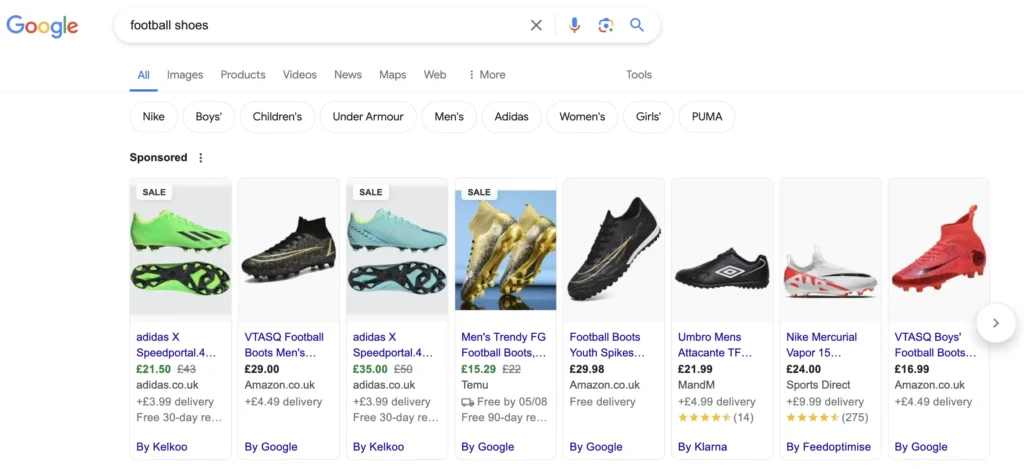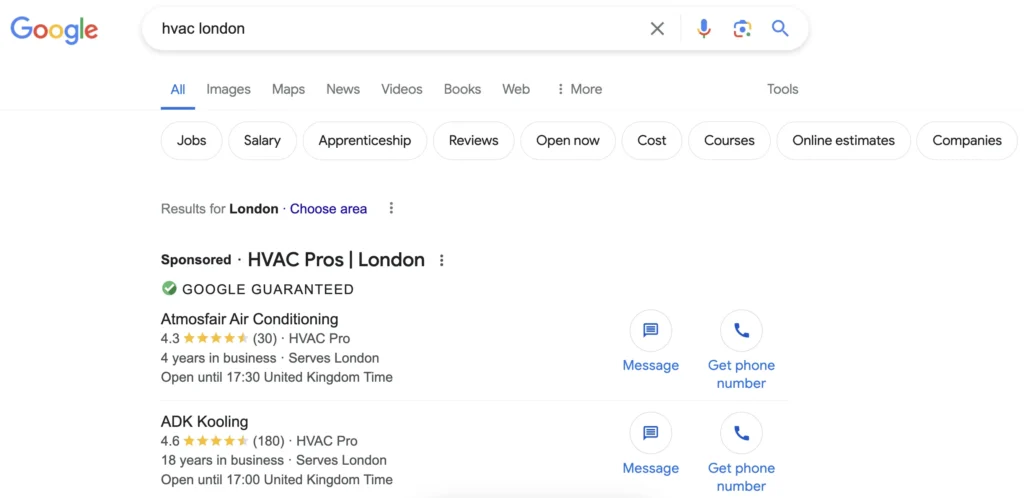
Google Ads
Summary
- What is Google Ads and why should businesses be including this in their marketing mix?
- Learn about the various types of Google ad and what they involve
- Find out what ad offers Google has for certain organisations
- Understand what firms need to do to make the most of Google Ads
Paid advertising is one of the most common forms of digital marketing, and the top platform for this is Google Ads. With more than 8.5 billion searches taking place on the site every day, this represents the biggest possible audience for your messaging.
However, Google Ads doesn’t just let you place ads on search results. It also covers a wide variety of other sites, including YouTube, Maps, Shopping and a huge network of partner sites. This means that using Google Ads lets you be seen by the most relevant users, no matter what type of business you’re in.
With so many options, it can feel a little overwhelming. Therefore, if you’re not sure where to start, read on for our essential guide to what Google Ads is, what your options are and how you can make it work for you.
What is Google Ads?
Google Ads refers to Google’s range of pay-per-click (PPC) advertising services for businesses. This includes text ads that appear in search results, display ads, videos and much more. Formerly known as Google AdWords, the platform helps firms promote their business, raise brand awareness, sell products and drive traffic to their websites.
There’s no minimum spend, so you can get started with as small or large a budget as you like, and the services are all managed online via the Google Ads dashboard. This lets you create and modify campaigns at any time, including adjusting the copy or imagery, changing the keywords you target or altering your budget.
How does Google Ads work?
The Google Ads platform works by showing users ads it believes to be most relevant to their activities. On the Google search platform, for example, every time a user enters a query, the platform runs an auction to select the most suitable ads, using factors including the relevance of keywords, the ad’s quality and how much the advertiser has bid. The winning bids are displayed to users and, if the searchers click through to a landing page, it is only then that the advertiser is charged.
For advertisers, the process of using Google Ads is essentially as follows:
- Identify which keywords you want to bid on
- Create the ad content
- Place a bid in an ad auction with your maximum desired spend
- Pay for any clicks your ads receive
- Review the results
It’s not all about how much you bid that determines whether your ad gets shown. Google also evaluates the quality of your ad based on a number of factors, including its relevance and how good your landing page is. The higher the quality score, the more likely your ad is to be seen, and the less you’ll have to pay. Gaining the right auction insights for Google Ads is therefore essential in getting the best results.
How much does Google Ads cost?
One of the great things about Google ads costs is that you can pay as much or as little as you like. A small business can get started with the platform on a budget of just a couple of hundred pounds a month and still expect to see results. Meanwhile, large multinational corporations can easily spend upwards of £100,000 a month on these ads.
Google Ads typically works on a PPC basis, so you only get charged once a user has actually clicked on one of your ads. However, exactly how much this will be can vary widely depending on a large number of factors, including the industry you operate in, how competitive the keywords you’re bidding on are and the type of audiences you’re targeting.
However, to give you some idea of what you can expect to pay, research by WordStream puts the average cost-per-click (CPC) for Google Ads across all industries at $4.22 (£3.26). However, this can range widely by industry, from $1.55 for real estate and arts and entertainment firms up to $9.21 for legal services.
Types of Google ads
As mentioned above, Google Ads offers much more than just paid search. Choosing the right types of Google ads, based on your objectives, business and target audience, is a critical first step in any campaign. Therefore, it pays to familiarise yourself with all the major options so you can direct your efforts in the best way.
Google Search Ads

Among the most common types of Google Ads, Search ads are the text ads you find in the Google search engine results pages (SERPs). They’re selected automatically in real-time in response to a user’s query and are therefore highly targeted. Search ads will appear as a link accompanied by your website’s name, its favicon, page title tag, and meta description.
Google Display Ads

Display ads are image-based advertisements that appear across the web on sites connected to the Google Display Network. This covers all of the web giant’s properties from Gmail to YouTube, a well as external partners. Display ads are determined by webpage topic, browsing history and market category and are great for retargeting users who’ve already shown interest in your brand.
Google Discovery Ads

Discovery ads use artificial intelligence to help optimise their placement, meaning content will be automatically tailored to users via customer intent signals. They appear across Google’s Discover feeds, YouTube’s homepage and Watch Next feed, and the Promotions and Social tabs on Gmail, and include multiple images, headlines and descriptive copy.
Google Shopping Ads

These ads are tailored to appear specifically on Google Shopping, but can also be seen in SERPs, Maps, Images and other partner locations. They’re ideal for brands that sell physical products and will include imagery of the items on offer, pricing and offers and other information pulled directly from the Google Merchant Center.
Google Local Service Ads

Aimed at small businesses providing a wide range of services, from plumbing to removals, Google Local Service Ads are tailored for local searches and enable individuals to contact businesses directly from their search. Unlike other parts of the Google Ad network, they are priced on a cost-per-lead rather than a PPC basis, while they also offer peace of mind to users that the advertisers have been checked and verified by Google.
Google Ads Examples
The different types of Google Ad will each have their own purpose, look and content. However, there are a few common features that you’ll need to include regardless of which part of the network you’re using.
- Enticing copy – Whether it’s a headline, image caption or body text, a strong, clear message is vital in drawing in users.
- Relevant keywords – Choosing the right keyword and ensuring this is prominent both within the ad itself and in the metadata is an essential part of the success of any ad. Good keyword research is therefore vital for finding the best opportunities.
- A compelling CTA – An ad needs to spell out directly what you want your user to do next, whether this is clicking on a link, completing a purchase or getting in touch for further information.
- A quality landing page – A good ad strategy needs to focus on more than the ad itself. You also need to look at the user experience visitors can expect once they’ve clicked on it. This isn’t just about improving the odds of a conversion – Google takes this into account when calculating your ad rank, so a poor landing page on your own website can directly harm your Google Ads performance.
Here are some examples of what these various Google Ad types look like in practice.
Google Ads Grants

As well as regular Google ads, there are a range of other offers that are part of the platform for various users. We’ve touched on Local Service Ads above, but if you’re a charity or nonprofit, did you know you can also apply for free Google advertising?
These are called Google Ad Grants and offer eligible organisations up to $10,000 a month of free text ads on Google Search (£7,000 in the UK). To qualify for this, you must be a registered charity and meet certain requirements for your website, but once approved, this can give a significant boost to charitable campaigns, whether you’re looking to raise funds, boost awareness or attract new volunteers.
While there are certain limitations on this free advertising – you can’t use it for display ads, for example, or access Google’s full range of targeting features – this can offer nonprofits a great way to reach audiences without having to worry about spending money to compete with larger commercial competitors.
Google Ads Transparency

Another feature of the platform that marketers can take advantage of is Google Ads Transparency. This allows any user of the site to see what ads other companies are running. Originally designed to provide trust and accountability in political advertising by allowing users to see who is paying for this type of content, this has now expanded into a useful resource for marketers.
This can be used to provide great insight into what competitors are doing. By taking advantage of this feature, professionals can learn about the types of ads other brands are running and make inferences about the keywords they’re targeting, the audiences they’re trying to reach and their spending partners. This can be used to inform your own strategy by identifying any gaps or devoting resources to areas where they are currently being outperformed.
Google Ads vs Facebook Ads
It’s important to remember that Google is far from the only PPC platform out there, and it can pay dividends to take a diverse approach to paid advertising in order to more closely target the most relevant users in the places they spend most of their time. Therefore, social media advertising is another powerful tool for any marketer’s strategy.
While the likes of LinkedIn and X/Twitter all have their place, Facebook advertising is often an ideal place to stand in the social media space. This offers access to the wider audience – with over three billion people logging onto Meta’s flagship platform every month – and lets professionals greatly refine their targeting, using a huge number of demographic and interest parameters to get in touch with the right audiences.
When comparing Google Ads vs Facebook Ads, both services offer a range of ad types, including text, image and video ads, but Facebook’s can offer greater flexibility and visual impact. Generally speaking, social media advertising is great when you’re looking to raise brand awareness, whereas Google offers a stronger sales platform.
However, this doesn’t have to be an ‘either/or’ choice – a well-rounded paid advertising strategy will often have space for both. If you’re not sure which platform would be better for a specific campaign, a good digital marketing agency partner can provide advice.
Axonn’s take on Google Ads
If you want to learn more about Google Ads, Axonn can offer advice and support on everything from keyword research and ad types through to managing a bidding strategy and analysing data. Get in touch today to find out how we can help your brand with display and Google ads.
We’d love to hear from you,Get In Touch.
